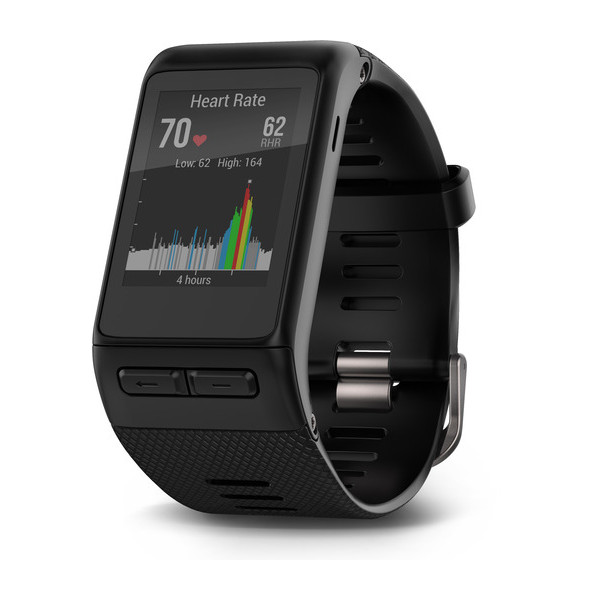 |
| Image courtesy Garmin.com |
Today will almost certainly be my last day wearing a Microsoft
Band 2. After the clasp broke two months into wearing it and the product had to
be replaced under warranty; after the subsequent replacement wore through at
the bracelet and
had to be patched; after the bracelet continued to crack from underneath
the patch; after the other side of the bracelet also cracked and wore through; it was finally – finally – time to throw in the towel and
get rid of this terrible piece of barely wearable technology.
As my regular readers know, I
was initially quite impressed by the Band 2. I said when I first got it
that it offered many important improvements over its predecessors in the
history of wearable running gadgets. Those observations remain true today.
Unfortunately, none of that matters if the darn thing breaks and falls apart
after a couple of months of normal use. Ultimately, the Band 2 suffers from the
same design flaw that proved to be the Nike+ GPS watch’s undoing: by placing
core hardware inside the bracelet, the manufacturers ensured that the device
would fail as soon as anything bad happened to the bracelet. Note that Nike discontinued
its running watch and never produced a replacement, opting instead to
concentrate on a smartphone app. I don’t know what Microsoft’s plans are as far
as future Band products go, but considering what an utter failure the Band 2
ended up being – based solely on hardware design shortcomings, it must be
emphasized – it seems unlikely that Microsoft would be keep to jump back into the
smart watch game. But then again, no one else is making a Windows-platform
smart watch, and Microsoft apparently aims to compete with the likes of Google
and Apple.
Unfortunately for Microsoft, however, the failure of their
Band 2 – the complete and utter avoidable failure of it all – has soured me not
only on future Band products, but also on Microsoft products as a whole. The
Band 2 was relatively pricey at $250. While the software that it runs is undeniably
good, I feel the sting of loss here. Perhaps if I were made of money, then I
wouldn’t think twice about burning through $250 on an experimental smart watch.
But this hurts.
Before my second Band 2 fell apart, I was seriously
considering replacing my laptop with a Surface Pro. They look so cool. They
seem so good. It’s tempting. But when I think about my experience with the Band
2, I suddenly become reticent. Why would I spend $900-$1500 on Microsoft’s
flagship hardware when their $250 wearable couldn’t last me two measly months?
I simply can’t justify it. Microsoft made the mistake of losing me as a customer
for life. I’ve gone from being a promoter to a detractor.
Well, enough sour grapes. I still love tracking my activity,
but now what do I do?
My back-up plan was always to revert back to my trusty Garmin
Forerunner 620. This highly reliable device sucked me into the wearable tech
game in the first place, by providing me with an endless sea of graphs and
charts to gaze at every time I ran. I even got into heart rate zone training
for a while because of it. Something that worked so well for so long, without any
signs of device failure whatsoever, could surely last me a little longer.
As I considered dusting off the old 620, I realized that
without my daily step count, continuous heart rate monitoring, sleep monitoring,
etc., I’d really be missing out on a lot of good fun. Meanwhile, I had good
evidence to suggest that there is at least one company out there that knows how
to make a fitness watch that doesn’t immediately fall apart: Garmin. So, I
thought, why not replace my miserable broken Microsoft thing with Garmin’s
equivalent offering?
Here I had essentially two choices: I could opt for the
modern-day equivalent of my Forerunner 620, which was Garmin’s flagship model
at the time I got it, or I could opt for the model more closely resembling my Band
2. Each product has its own advantages, and of particular interest to me and my
readers was the Forerunner 735XT’s advanced running features, such as VO2 max
estimator, recovery advisor, and race predictor. But at a price of $450, I
realized that I’d be spending about $200 more to receive statistics that were
simply not worth $200 to me. Instead, I opted for the vivoactive HR device. I
may lose out on some of these deeper running stats, but the device will still
deliver all of the benefits of my Microsoft Band 2, plus a few Garmin exclusives
like the GLONASS location tracking system. And, to my delight, it seems that
Garmin has greatly improved on its mobile app since the days of my Forerunner
620, so I should have something that is superior to the Band 2 in every way
that matters.
And I’m speculating here, but I think I can actually gain
access to at least some of the Forerunner line’s running stats if I connect the
vivoactive HR to the chest strap HR monitor that came with my 620, i.e. that I
already own. More on that if it pans out.
For now, it’s time to charge up my new device and prepare to
move back over to a superior fitness tracker. The journey continues.
No comments:
Post a Comment